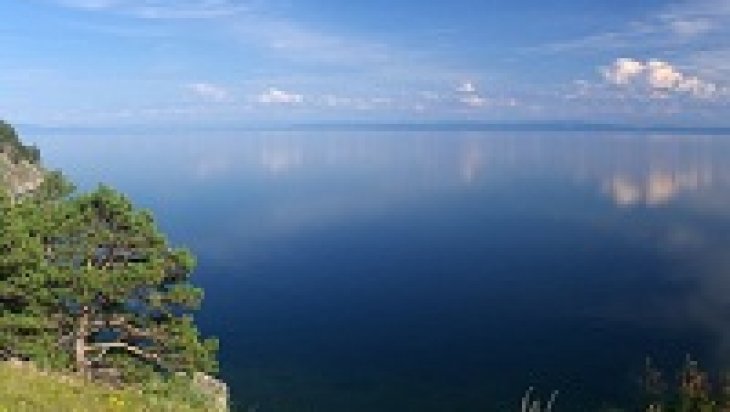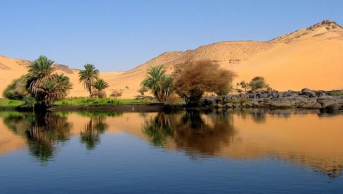A New Phase in Iranian Economy and Its Implications in Hydropolitics in the Middle East

Iran’s “nuclear deal” in 2015 implies not only a new phase in Iranian economy, but also a change in Iranian stance in Middle East hydropolitics. It is a well known fact that Iran is a semi-arid country with scarce, sensitive and rapidly deteriorating water resources. End of the decades-long sanctions will mean a boost for water transfer projects that Iran sees as the most viable route in solving its growing water problems. End of sanctions will also translate into increased water use in Iran, which will also put a pressure on the government to find new sources for water supply. Iran’s new horizon on the other hand, can also mean an opening of another pandora’s box in the Middle East.
Following a series of negotiations for years, finally Iran and a group of world powers (including the permanent members of the United Nations Security Council, namely the United States, the United Kingdom, Russian Federation, France, and China, plus Germany and the European Union have reached a comprehensive Agreement which ended nuclear plan-related sanctions on Iran. According to experts, the deal will give a big impetus for Iranian economy, particularly for the energy sector of the country. Iran has 10 percent of global oil reserves and around 20 percent of natural gas reserves. But the impact will be well beyond the energy sector. Economic (re)connections between Iranian and mainly European counterparts in many other sectors have already gained momentum in just days after the Agreement.
There are many water transfer projects in Iran either in preparatory or construction phases. Iran is proudly digging several greatest tunnels in the Middle East for water transfer. One of these important water transfer projects, for instance,is the one from the Sea of Oman. The project which would convey some 440 million cubicmeters annually, was initially aimed at providing drinking water for the residents of the southern parts of the region, but today the industrial sites in the province are demanding water from it. It could be easily expected that it would now be easier for Iran either to finance these sizable projects with its own means, or find foreign funds.
Another project is related to revival of the Urmia Lake. Iranian President Rouhani has set up a committee for studying the alternatives for restoring the Lake.According to experts, Lake Urmia needs some 3.1 billion cubicmeters of water on annual basis for its survival. With current precipitation and withdrawal rates, it will be very difficult for Lake Urmia to survive by its own. Under these circumstances, water transfer from close basins, has come to the fore in recent years as a pressing alternative. One possibility, according to some experts, is a water transfer project from Lake Van. However, there are also experts warning that such a project would mean a threat to the donor basin, namely the Lake Van closed basin.
Water transfer from Kura-Aras transboundary basin was seen as another alternative in previous years. However, the project faced with a strong Azerbaijani resistance and then abandoned by Iranians.
In searching for a revival strategy for Lake Urmia, eyes also turned to Little Zab, a sub-basin of the Euphrates-Tigris transboundary basin. A project consisting of a dam and a tunnel will store some 160 million cubicmeters of water and convey some 121 million cubicmeters of water per year to Lake Urmia, from the Euphrates-Tigris transboundary basin. The project is close to completion. And the story does not end here: there is also a project related to water transfer from Kura-Aras transboundary river.
These developments, certainly,are and will be positive for the Iranian economy and society at large. But there is a serious risk that these projects may also increase the pressures on transboundary water basins where Iran is a basin country. As discussed above, the impact on Euphrates-Tigris transboundary basin would be huge. There are also concern originating from some Iranian experts, who state that a sustainable solution would be reducing the agricultural use, rather than satiating it. Prohibiting unauthorized use of not only surface but also groundwaters would be the best way to reverse the fate of Lake Urmia, as well as other environmentally threatened areas such as wetlands.
As the relevant literature suggests, in order to start a water transfer project, three criteria -as a minimum- should be met: 1Local hydrologic conditions limit the availability of water resources;2Local centers of demand cannot be supplied by local resources in support of continuing urban development;3Local water supply conditions need improvement because of depletion and pollution of local water resources. These criteria could be called “the criteria of necessity”. But the author of this piece believes, we also need “the criteria of appropriateness” for a project to be socially, environmentally and internationally sound and legitimate. It is beyond the scope of this paper to discuss the details of these criteria, but, it is apparent that all the criteria listed above should even be more stringent and closely scrutinized in transboundary cases, where more complex sets of interests are at stake.






